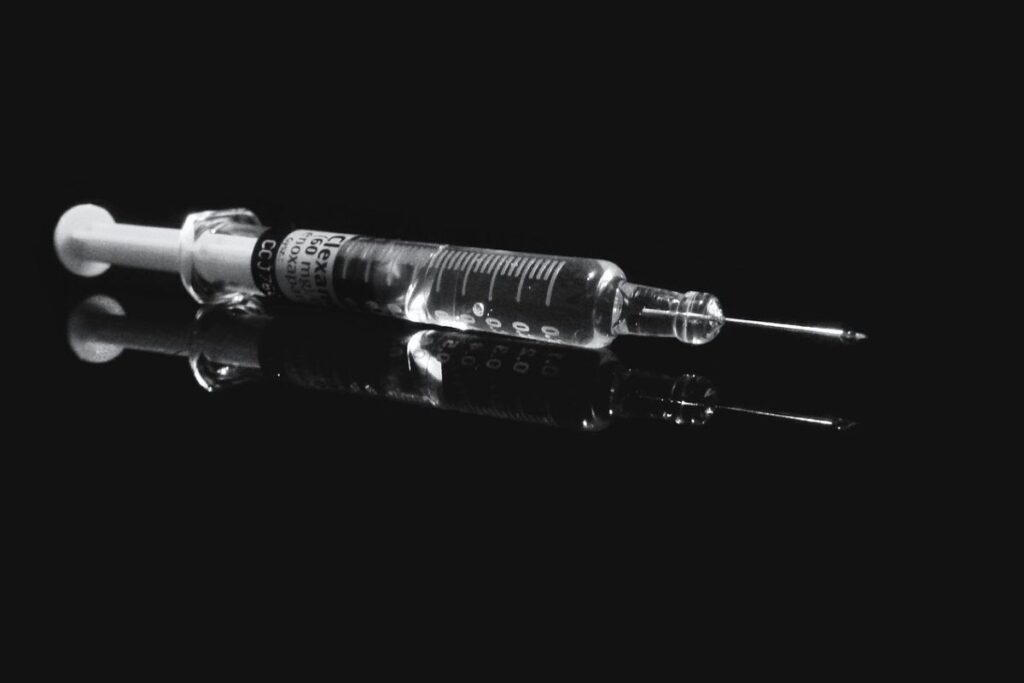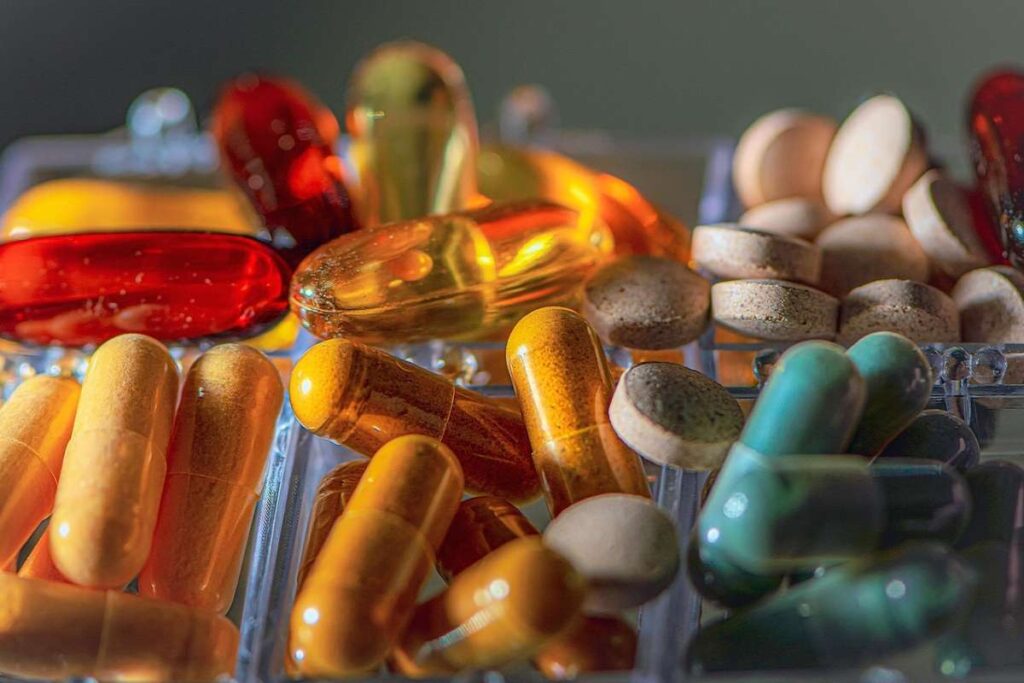I love to travel. There aren’t many things I find more exciting than exploring a new location and experiencing the local culture, whether it’s in a country I haven’t visited before, a new city or region in a country I’ve already been to, or taking in more of the beautiful sights and experiences in Canada, the country I call home.

The only downside to this “hobby” is that travel is usually pretty darn expensive, so I don’t get to wander the world nearly as much as I’d like. I’m relatively sure that I’m not the only one in this boat.
Travelling was a lot simpler when I was younger:
- Plan the trip.
- Buy the plane ticket.
- Make hotel reservations.
- Pack my passport and a week’s worth of clothes.
- Jump on the plane.
- Party time!
Since being diagnosed with Multiple Sclerosis (MS) twenty-three years ago, things have become a bit more complicated over the years.
Now, I have a few extra concerns to consider and plan for, namely my medications. I don’t have a long list of daily meds, but there are some considerations I’ve learned to keep in mind when planning a trip.
Injectable Medication
The first medication-related change to my routine ended up being fairly minimal, although I was pretty nervous about it for the first few flights. My primary MS disease-modifying medications have always been administered via subcutaneous injection. These medications come in convenient prefilled syringes, so I was very concerned about going through security with liquid-filled sharps.

I was diagnosed with MS and started taking Rebif in 2002 (I switched to Copaxone in 2016), shortly after security screening for air travel became a lot more stringent about what passengers could bring in their carry-on luggage (thanks to the 9/11 terror attacks in 2001).
After hearing the stories of grandmothers having to give up their knitting needles and breastfeeding mothers having to dump out their baby’s bottle because they couldn’t bring liquids on board, my mind jumped to the worst-case scenarios (because, of course it did).
I wondered:
- Would my syringes be considered possible weapons? I know. I get it; the idea of someone armed with subcutaneous syringes trying to take over a plane is pretty ridiculous. But is it any more outlandish than the idea of Grandma hijacking the plane with her knitting needles?
- Would the medication inside the syringes be an issue because it was a liquid?
- Would I have to somehow prove that I have MS to justify having this medication in my carry-on?
Fortunately, the two different medications I’ve taken over my MS journey have come with travel cards that identify the medication, can be filled out with relevant personal information about the patient, and have space for the prescribing doctor’s signature.
So, I filled out the card and asked my neurologist at the MS clinic to sign it.
With that taken care of, I felt somewhat better about my chances of getting through security without causing an international incident, but I still had visions of having my meds confiscated or being accused of trying to smuggle sharp objects onto the plane for nefarious purposes.
Fast forward to twenty-three years later, and I have never had a problem with having injectable medication in my carry-on; it doesn’t even count against the current 100 ml limit on liquids when going through security.
I haven’t ever had to whip out my travel medication card; it’s essentially been a non-issue. That being said, I would still recommend having one filled out and signed by your doctor, just in case.
The only considerations I really have to worry about with my injectable meds are ensuring I have enough medication to last through the trip and keeping them at the right temperature: 2°C – 30°C (36°F – 86°F).
Both medications I have experience with, Rebif and Copaxone, can be safely kept at room temperature for up to a month but need to be kept refrigerated for longer-term storage. This works out well because I’ve rarely travelled for longer than a week or two.
Both medications also came with a handy travel case with extra space to carry additional medication and a small, flat ice pack to keep everything cool. They also came with a travel-sized sharps container for the used syringes.
Remember that these meds cannot be allowed to freeze or get too hot. I always pack my meds in my carry-on luggage to protect against temperature issues (and to prevent the nightmare scenario of losing my meds in lost luggage). I also use an ice pack in the travel case to protect against higher ambient temperatures, especially when visiting tropical or desert locations (Vegas anyone?).
Sharps Disposal
Remember that every syringe you use must be disposed of safely; we are responsible for protecting others from our used needles.
Travel-sized sharps containers come in a variety of shapes and sizes, so add up how many injections you will need while away and bring a large enough sharps container to dispose of all of them. Or take multiple smaller sharps containers to maximize your luggage space.
While the number of syringes wasn’t as much of an issue with Rebif, at three injections a week, Copaxone (20 mg dose) is a daily injection. Disposing of a used syringe every day adds up fairly quickly, so make sure you’re prepared.
I was introduced to an excellent way to maximize my sharps container capacity when my MS drug coverage plan switched me over to Glactect (the generic version of Copaxone) about five years ago. My “starter kit” for this medication included a needle clipper.
A needle clipper is a handy-dandy little device that does just what the name implies: it clips off the needle portion of the syringe, leaving just a nub behind while safely storing the needle tips within the clipper’s body. The clipper provided in this starter kit held about 1,500 needles and was disposable when full. Just toss it and forget it.
This little device makes a huge difference because it removes close to a third of the length of a used syringe (with the plunger fully depressed), which allows you to fit more syringes in a travel-sized sharps container.
Capsules and Pills
The rest of my medications consist of pills (or tablets, if you prefer) and capsules.

Packing your medication in its original pill bottles with the prescription label attached is the best option. It beats trying to identify and explain unmarked pills to security, which could be extremely uncomfortable at best.
And make sure to wash your hands thoroughly before going through security, particularly if you’ve taken medication recently.
Let me explain.
I recently ran into a new little hiccup while flying to Mesa, Arizona. I walk with a cane due to balance issues, and for the first time ever, security became very interested in my walking aid. I mean, it’s an awesome cane and all, but that’s not why they were so interested in it. It turns out that my cane kept setting off their explosive trace detection (ETD) swab test.
I know, right?
On exploring the issue further, I had taken some oral medication (Amantadine to help with fatigue) just before lining up to go through security, and the residue left on my hands seemed to be the culprit. So, now I make a point of washing my hands and wiping down anything I may have touched after taking any medications before going through security to prevent a replay of this situation.
My sister had a similar experience flying back from Mexico a number of years ago. Security swabbed a few different locations on her wheelchair, and it kept triggering their ETD system. If you knew my sister, the idea of her being an explosives-bearing terrorist was beyond laughable.
Medication residue on her hands, which was then spread to different areas of her wheelchair as she touched them, ended up being the culprit here as well.
So there you have it; flying with prescription medication can take a little forethought, but it’s pretty simple overall.
How do you manage your medications when you fly?
